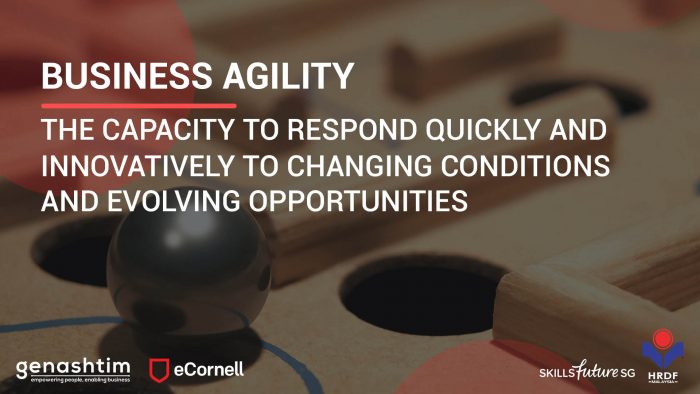The words “agile” and “agility” are quite popular these days. They are used in a number of forums, on a number of platforms, and in many industries and business sectors. They even now appear as part of the names of some educational programs and courses of study.
According to Dimitrios Spyridonidis, Associate Professor of Leadership and Innovation, Warwick Business School, in an article on HRD Connect, leadership agility consists of four dimensions. These dimensions do not include the traditional once-per-year strategy that is developed and implemented based on the assessment of internal and external factors. The four dimensions are dynamic in order to effectively cater to the constantly changing needs of customers. In this respect, leaders must be agile in establishing resilient organizations and building positive energy. The Volatile, Uncertain, Complex, and Ambiguous (VUCA) world that we live in demands that, and leadership agility is required for continuous organizational renewal. Leadership agility is also needed to enable leaders to go beyond being experts with all the answers to being catalysts who know neither the problem nor the answer but yet can engender the right circumstances in which the organization can innovatively uncover befitting solutions for impending challenges.
The four dimensions of leadership agility include context-setting agility, self-leadership, stakeholder agility, and creative agility. Context-setting agility calls for the leader to be a catalyst who views a problem within the scope of the wider environment in which the organization operates, with the intention of having a positive impact on that environment. Self-leadership is founded upon the agile leader’s strong awareness of his or her strengths, weaknesses, and drive for self-development. Stakeholder agility is derived from the agile leader’s skill in recognizing key stakeholders, comprehending their viewpoints, and taking control of their various perspectives. The agile leader or catalyst embarks upon trial and error, organizational disruption, new learning, and a possible culture change in order to tackle adaptive challenges.
A sure path to becoming an agile leader is eCornell’s Leadership Agility program, which you can pursue anytime, anywhere.
eCornell courses are approved by SkillsFuture Singapore for SkillsFuture Credit as well as by HRDF Malaysia under its SBL Scheme.

